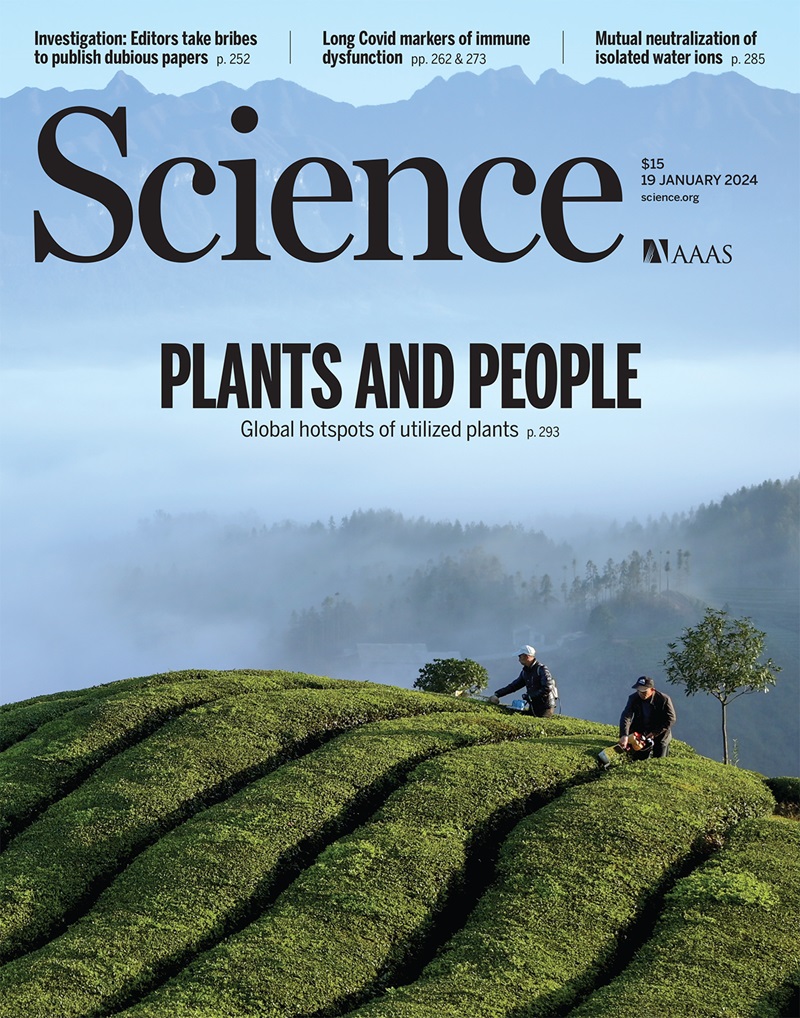The forearc seismic belt: A fluid pathway constraining down-dip megathrust earthquake rupture
IF 44.7
1区 综合性期刊
Q1 MULTIDISCIPLINARY SCIENCES
引用次数: 0
Abstract
A portion of fluids subducted in an oceanic plate is thought to return to Earth’s surface and has the potential to influence faulting during that migration. We used machine learning to detect and locate earthquakes in the northeast Japan forearc using data from a cabled ocean-bottom seismic network. That seismicity shows vertical distributions extending from the subducted plate to near the sea floor. The “forearc seismic belt” corresponds to the seismicity assumed to result from fluid supply from the underlying plate to the forearc and may also act to constrain the down-dip limit of megathrust rupture. The zone of high seismicity continues inland under metropolitan Tokyo, aligning with the Boso slow slip events and the eastern edge of the1923 Kanto earthquake, supporting forecasts of shallow damaging earthquakes.
弧前地震带:一条抑制下倾大逆冲地震破裂的流体通道
在海洋板块中俯冲的一部分流体被认为会回到地球表面,并在迁移过程中有可能影响断层。我们利用海底电缆地震网络的数据,利用机器学习来探测和定位日本东北部的地震。地震活动性显示了从俯冲板块到海底附近的垂直分布。“弧前地震带”对应的地震活动性被认为是由下伏板块向弧前供应流体造成的,也可能对大逆冲断裂的下倾极限起约束作用。高地震活动区继续延伸至东京市区的内陆,与博索慢滑事件和1923年关东地震的东部边缘一致,支持了浅层破坏性地震的预测。
本文章由计算机程序翻译,如有差异,请以英文原文为准。
求助全文
约1分钟内获得全文
求助全文
来源期刊

Science
综合性期刊-综合性期刊
CiteScore
61.10
自引率
0.90%
发文量
0
审稿时长
2.1 months
期刊介绍:
Science is a leading outlet for scientific news, commentary, and cutting-edge research. Through its print and online incarnations, Science reaches an estimated worldwide readership of more than one million. Science’s authorship is global too, and its articles consistently rank among the world's most cited research.
Science serves as a forum for discussion of important issues related to the advancement of science by publishing material on which a consensus has been reached as well as including the presentation of minority or conflicting points of view. Accordingly, all articles published in Science—including editorials, news and comment, and book reviews—are signed and reflect the individual views of the authors and not official points of view adopted by AAAS or the institutions with which the authors are affiliated.
Science seeks to publish those papers that are most influential in their fields or across fields and that will significantly advance scientific understanding. Selected papers should present novel and broadly important data, syntheses, or concepts. They should merit recognition by the wider scientific community and general public provided by publication in Science, beyond that provided by specialty journals. Science welcomes submissions from all fields of science and from any source. The editors are committed to the prompt evaluation and publication of submitted papers while upholding high standards that support reproducibility of published research. Science is published weekly; selected papers are published online ahead of print.
 求助内容:
求助内容: 应助结果提醒方式:
应助结果提醒方式:


